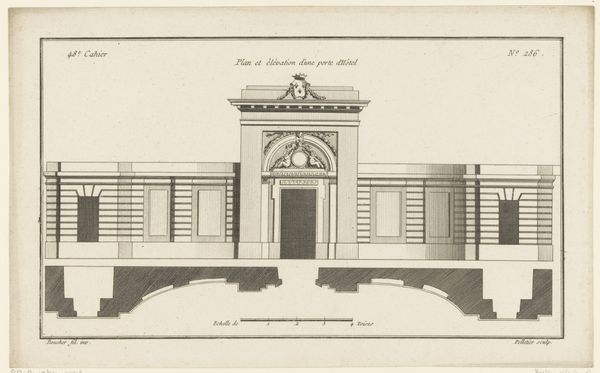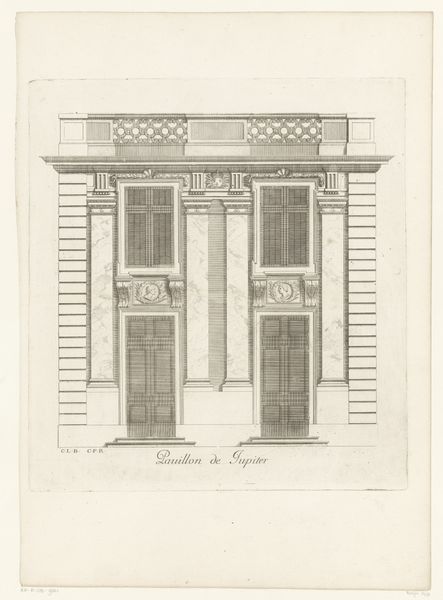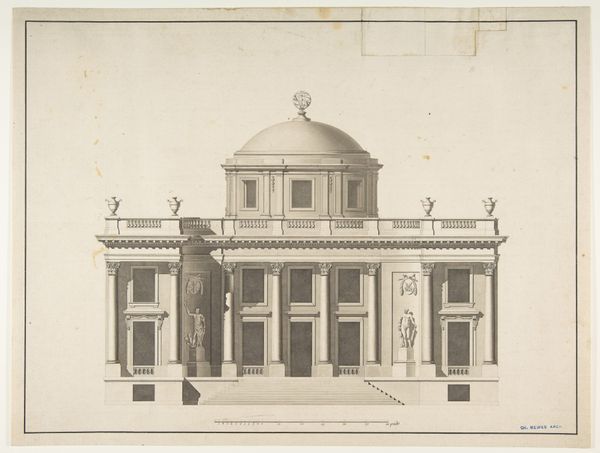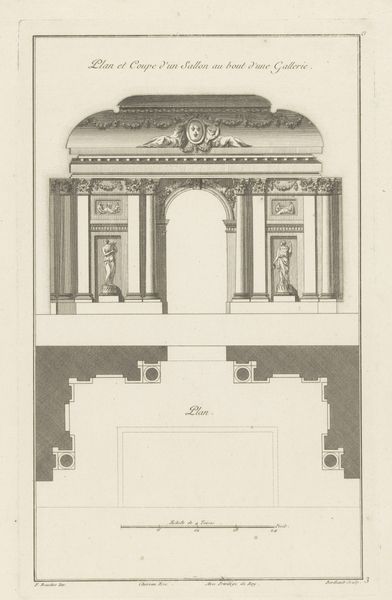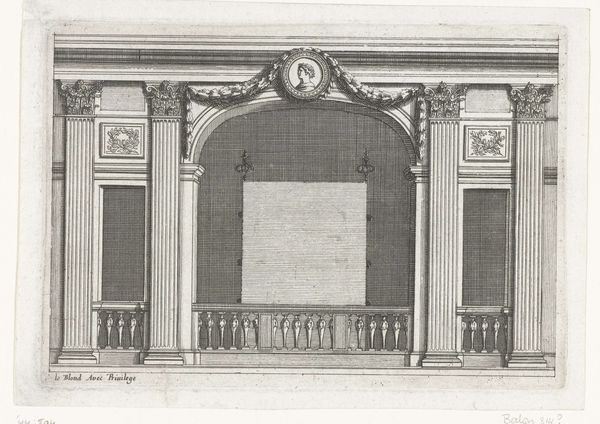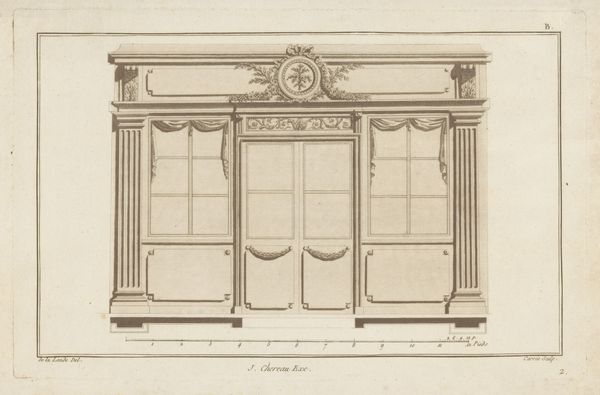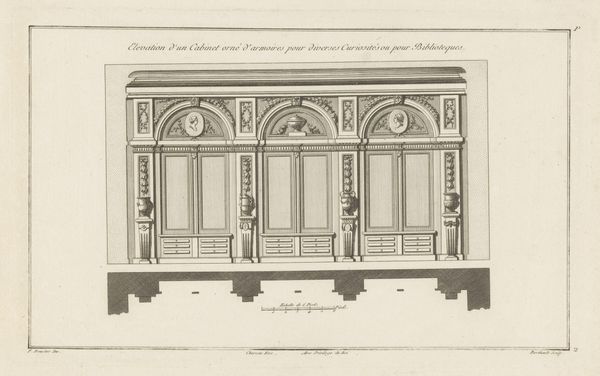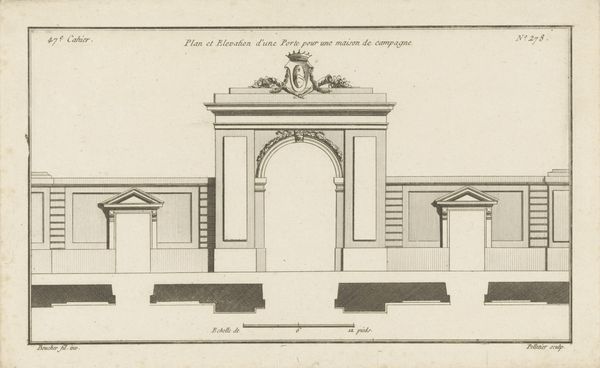
drawing, sculpture, engraving, architecture
#
drawing
#
neoclacissism
#
landscape
#
form
#
sculpture
#
line
#
engraving
#
architecture
Dimensions: height 204 mm, width 329 mm
Copyright: Rijks Museum: Open Domain
Jean Pelletier created this delicate etching of a garden façade in the eighteenth century. Note the classical round arches, the symmetrical arrangement, and the sculptural reliefs—all emblematic of a longing to reconnect with the glory of antiquity. The arches, a dominant motif, are not merely structural; they symbolize transition and passage. We see these repeated throughout history, from Roman triumphal arches celebrating military victories to their echoes in Renaissance and Baroque architecture, signifying power and order. Even the festoons of leaves—garlands adorning the upper levels—can be traced back to ancient Roman rituals, adorning temples and altars, later re-emerging as symbols of celebration and abundance. These motifs carry with them centuries of collective memory, continually resurfacing and being reinterpreted. They stir a psychological connection to the past, evoking an emotional resonance that transcends time. Pelletier's design is a powerful example of how visual symbols engage us on a subconscious level, tapping into our shared human history.
Comments
No comments
Be the first to comment and join the conversation on the ultimate creative platform.
